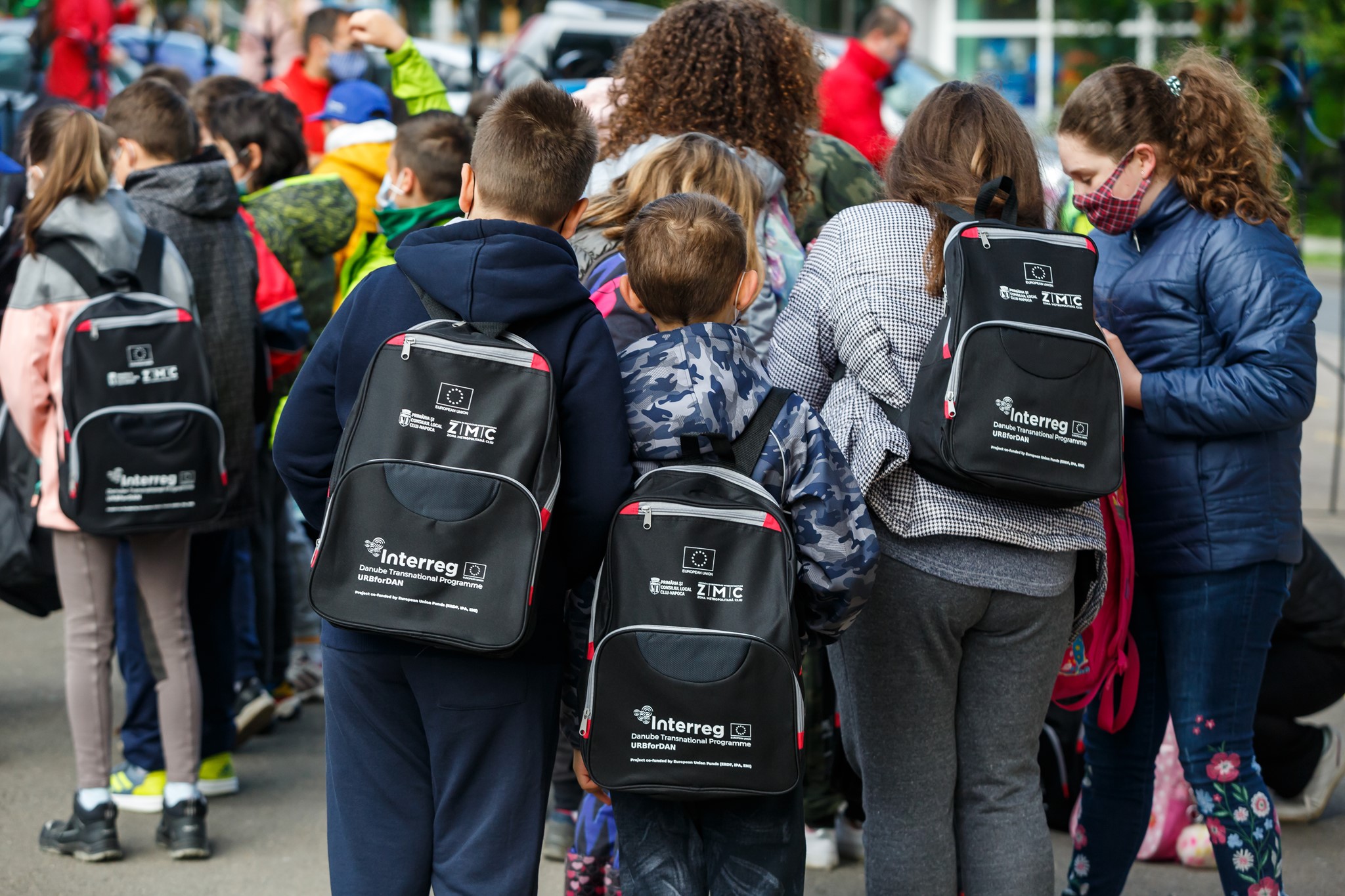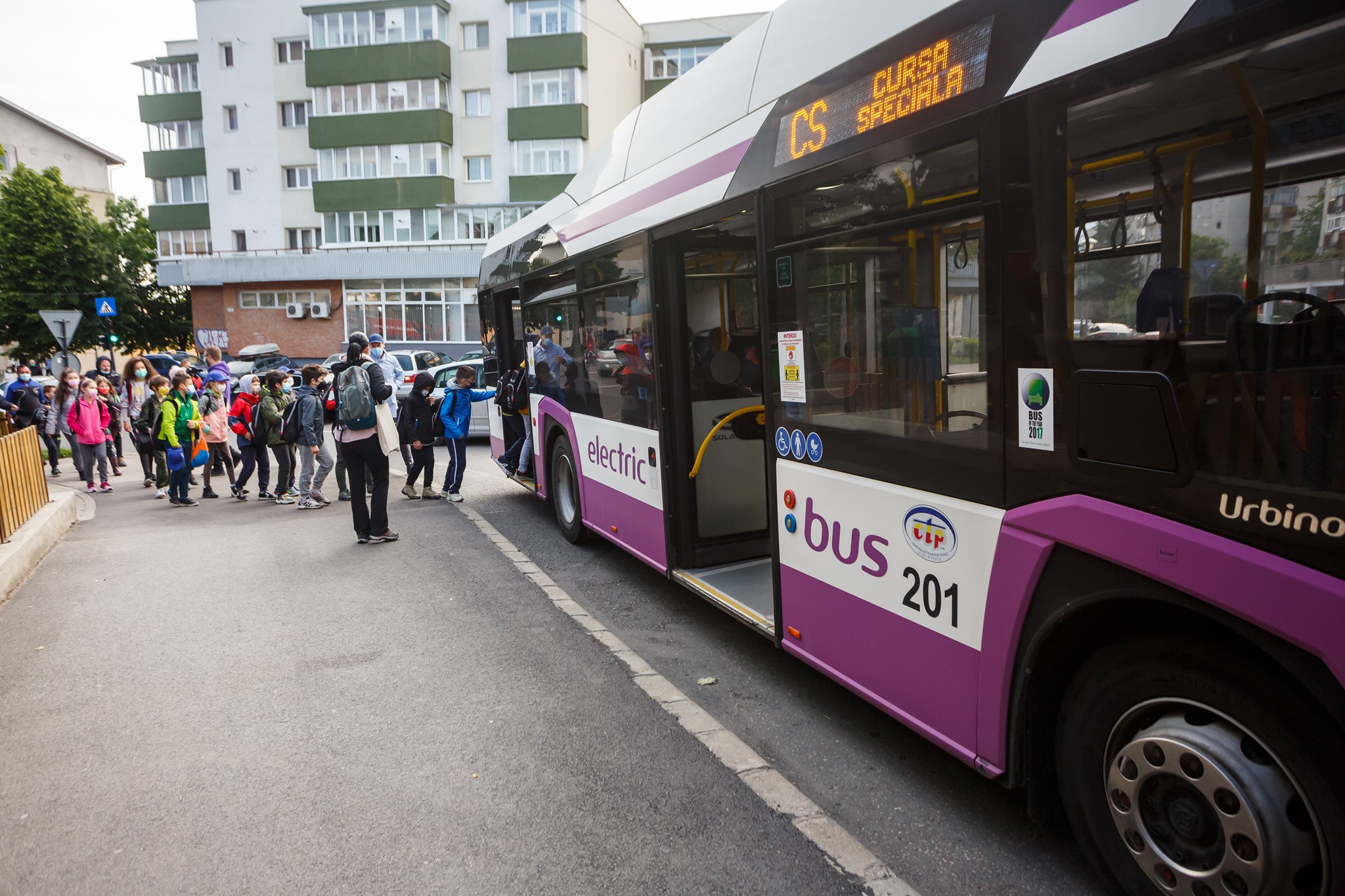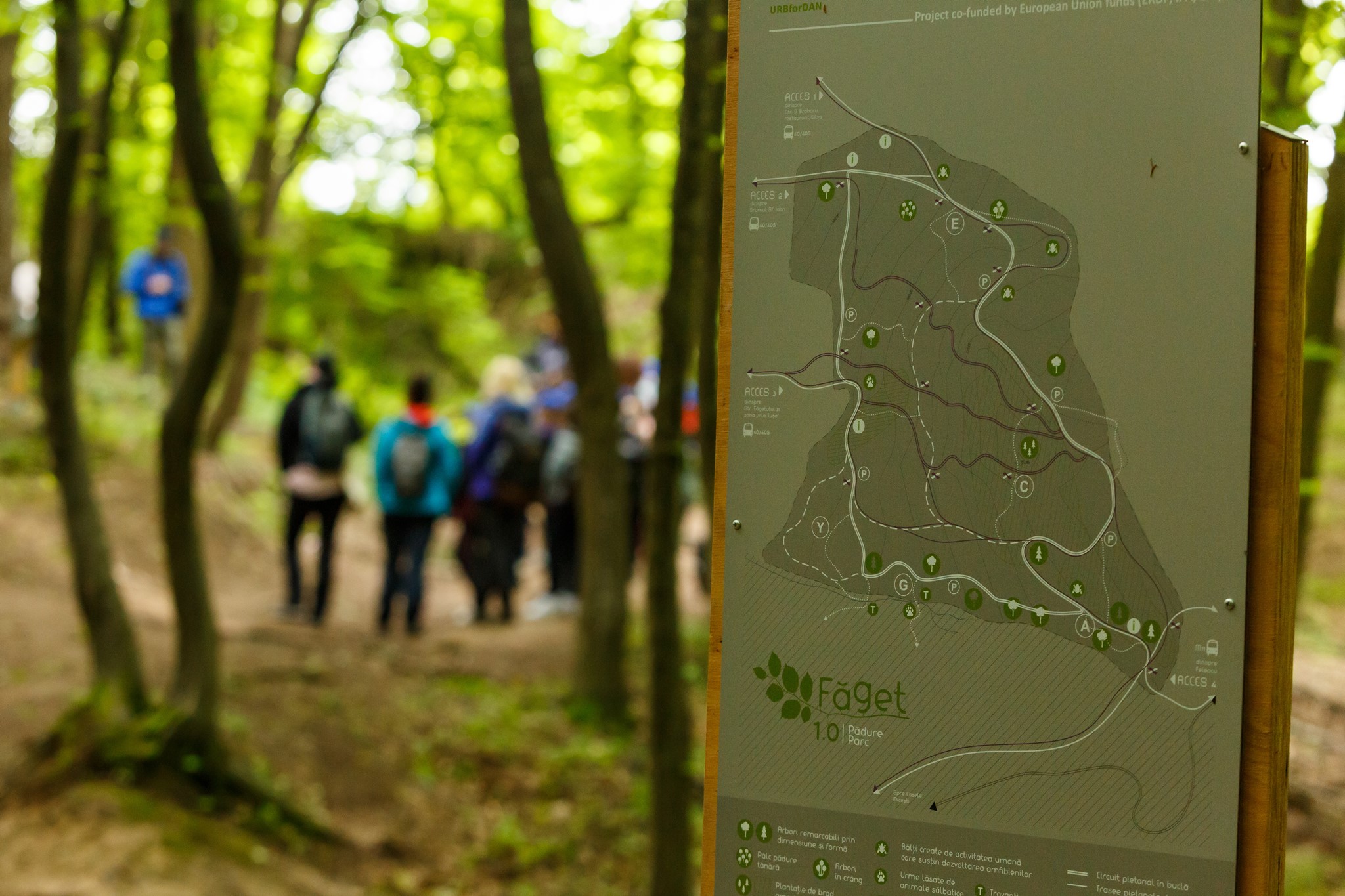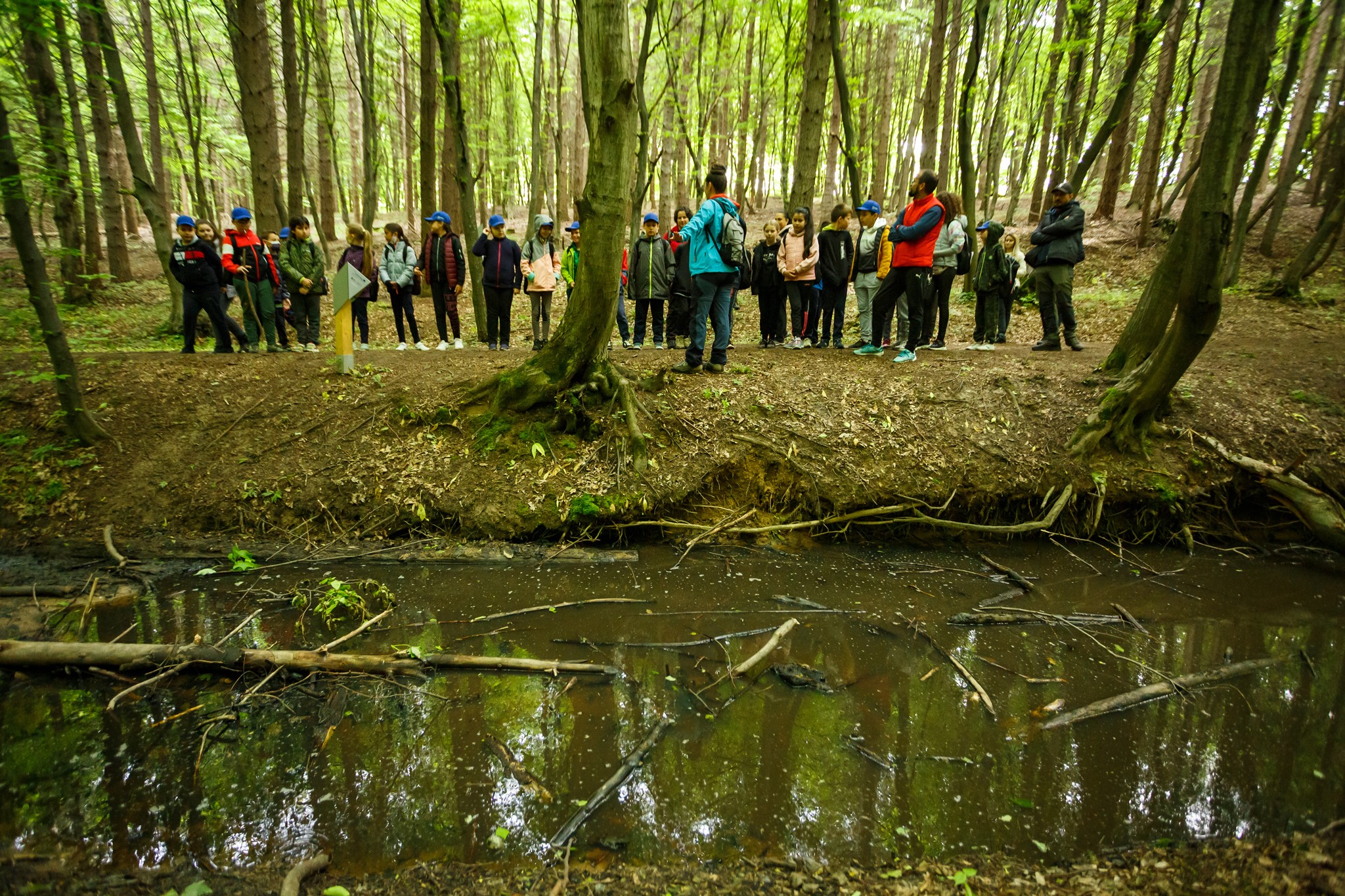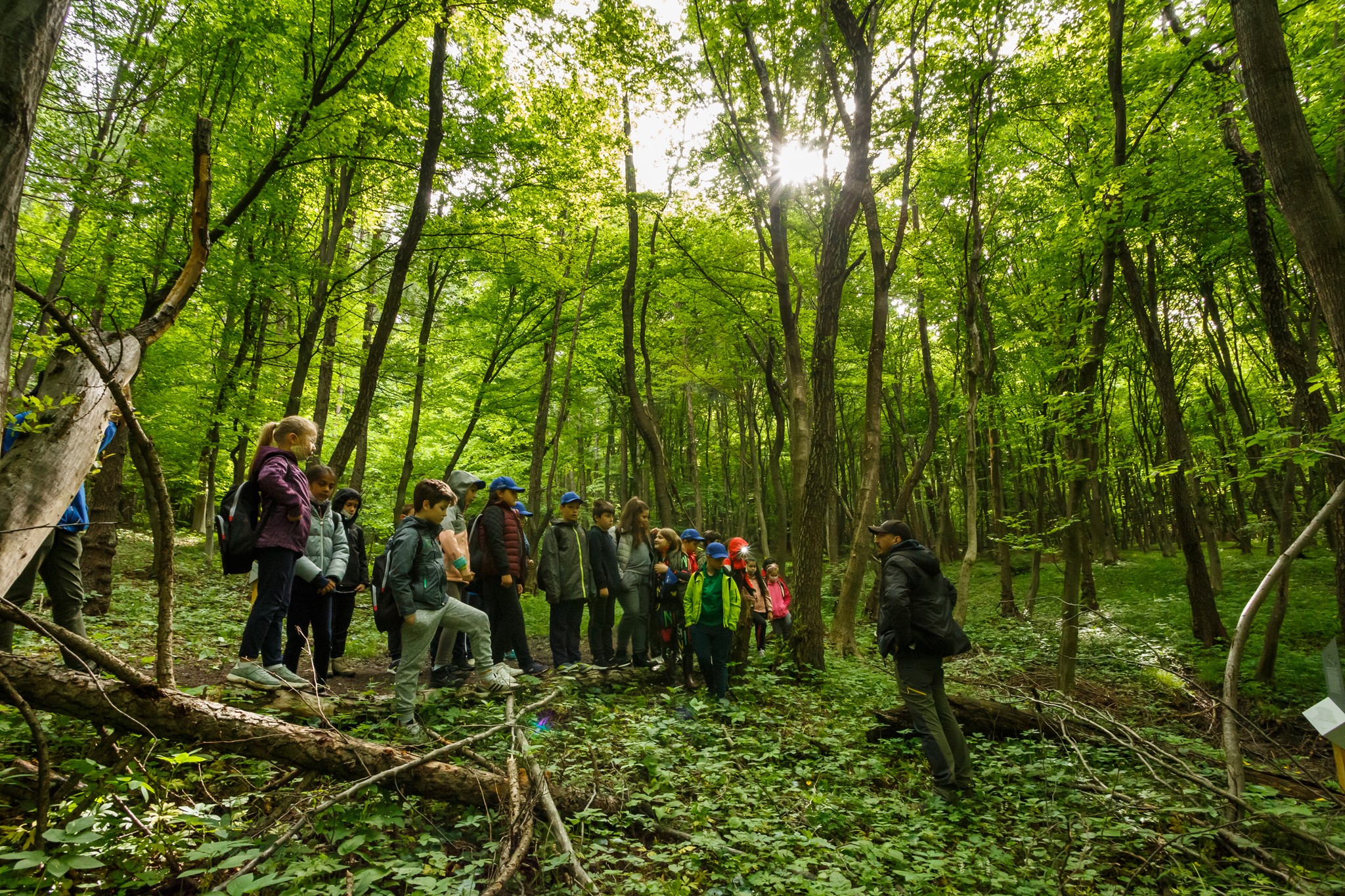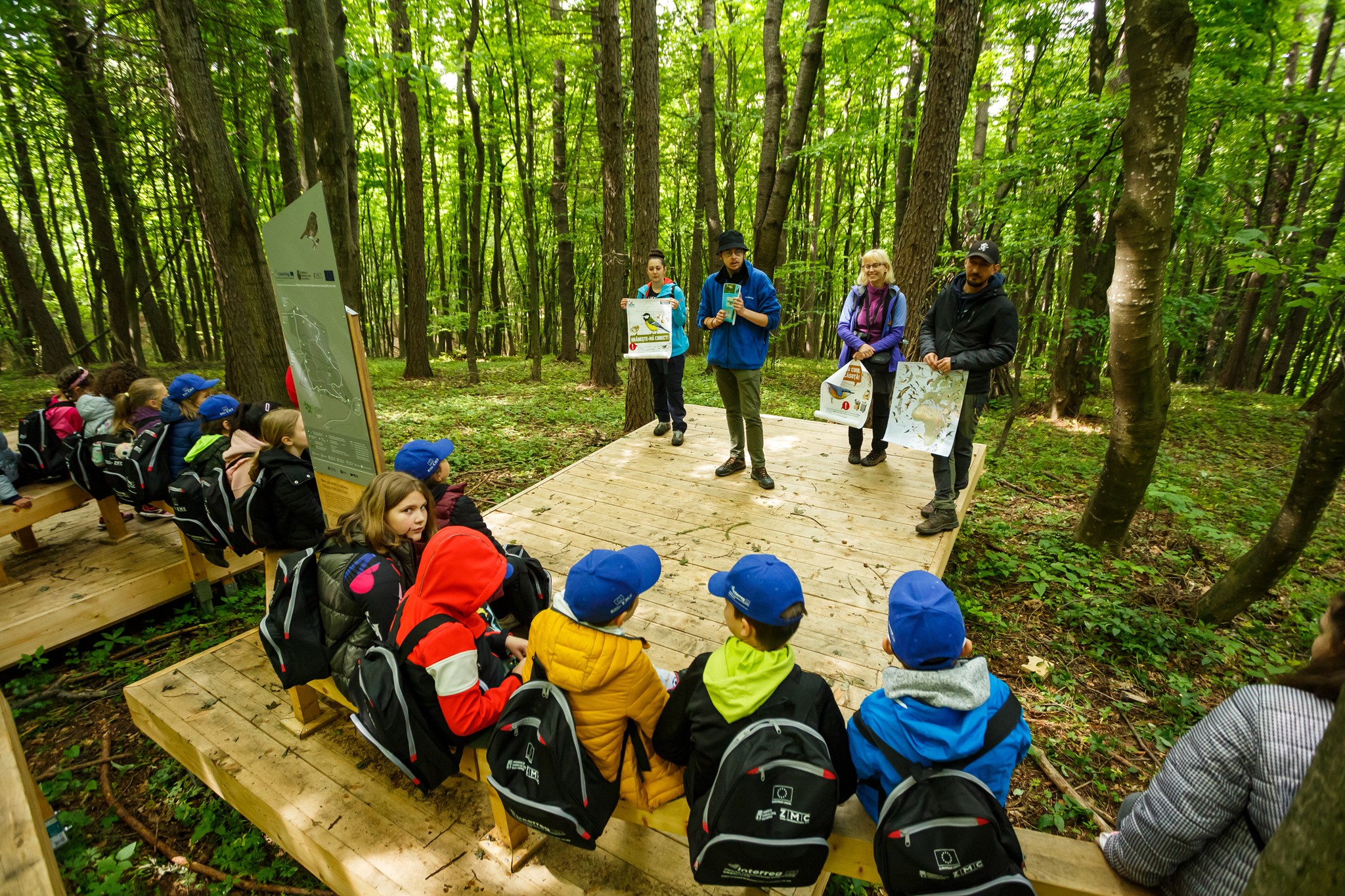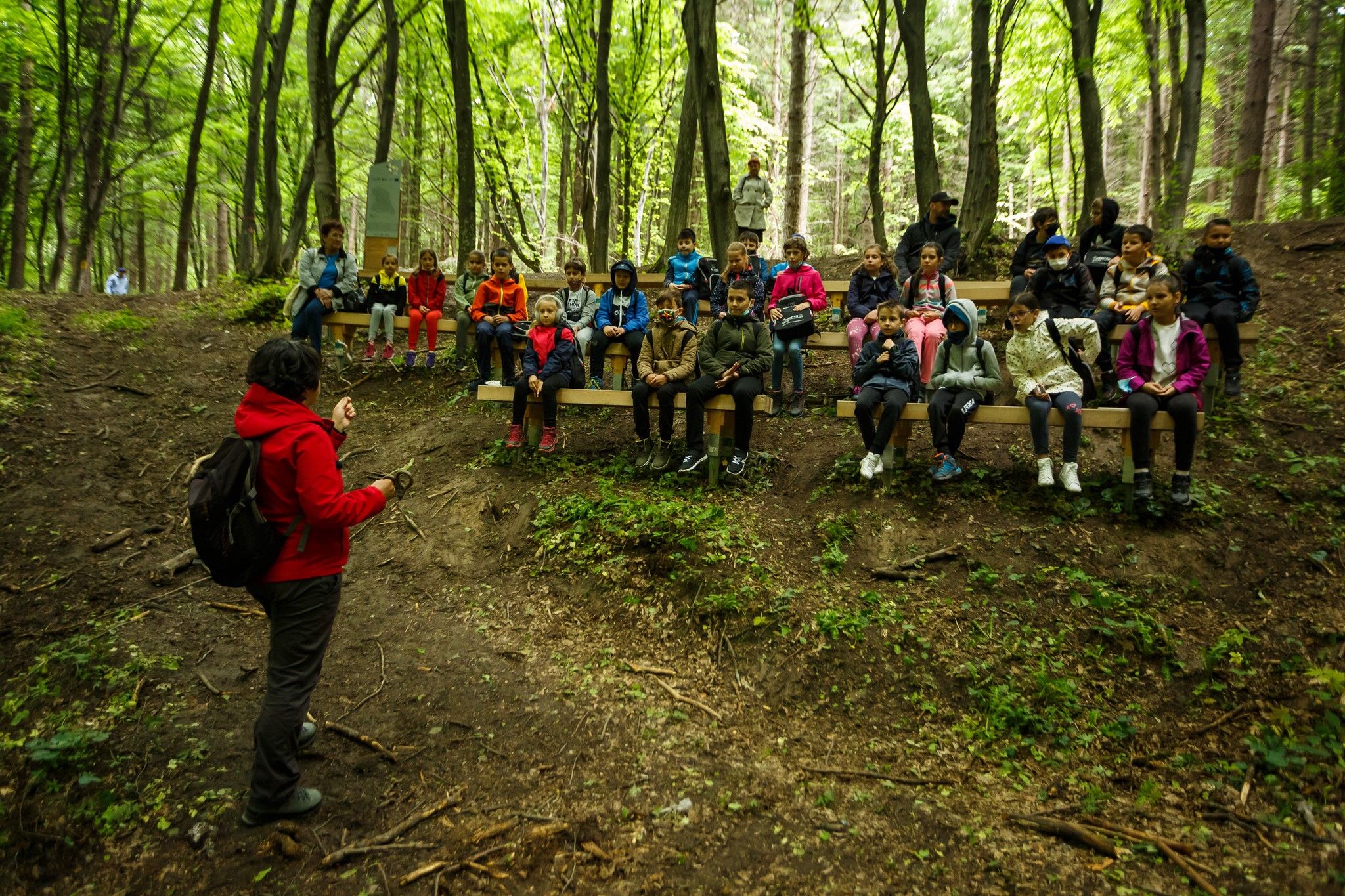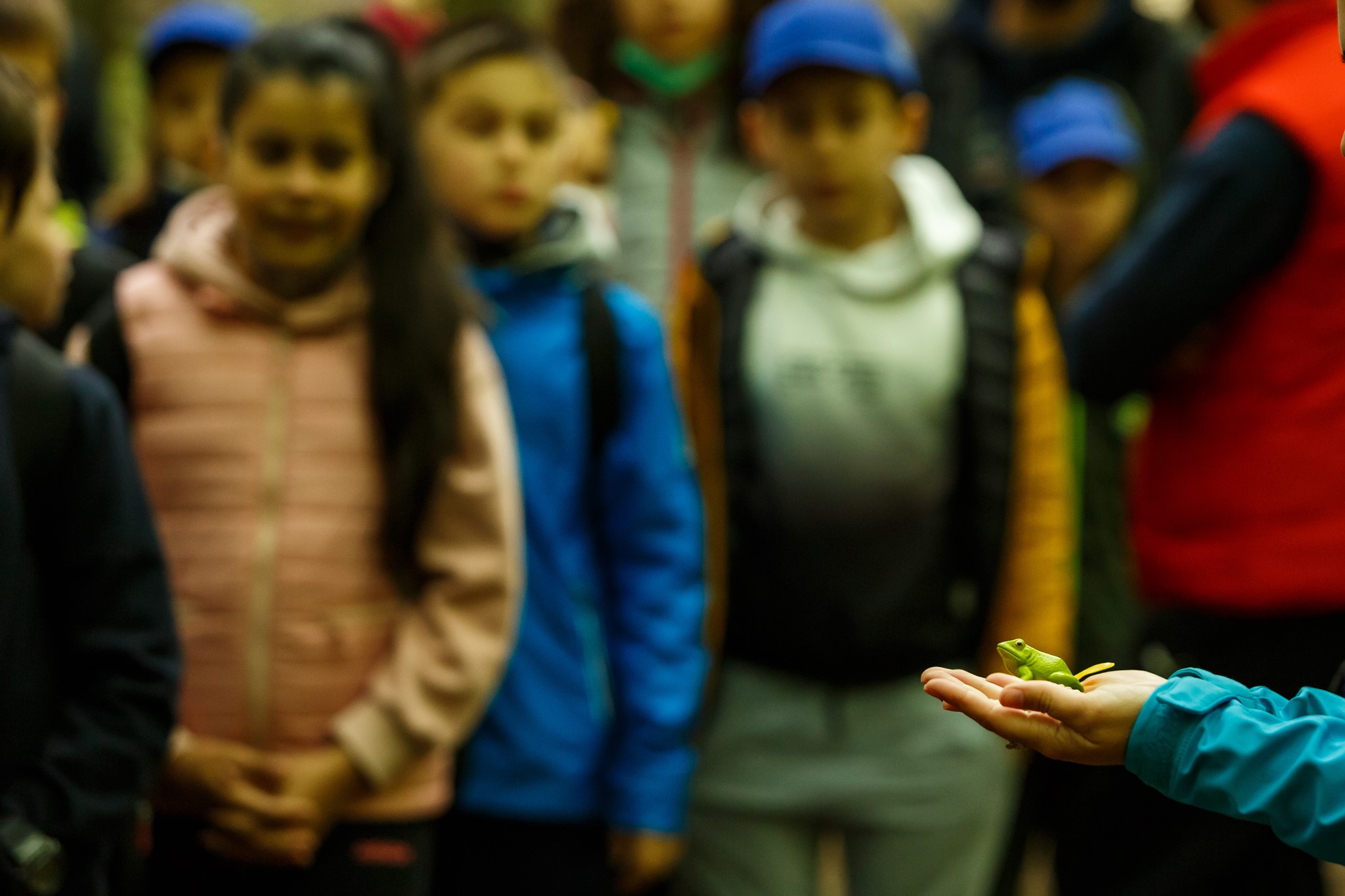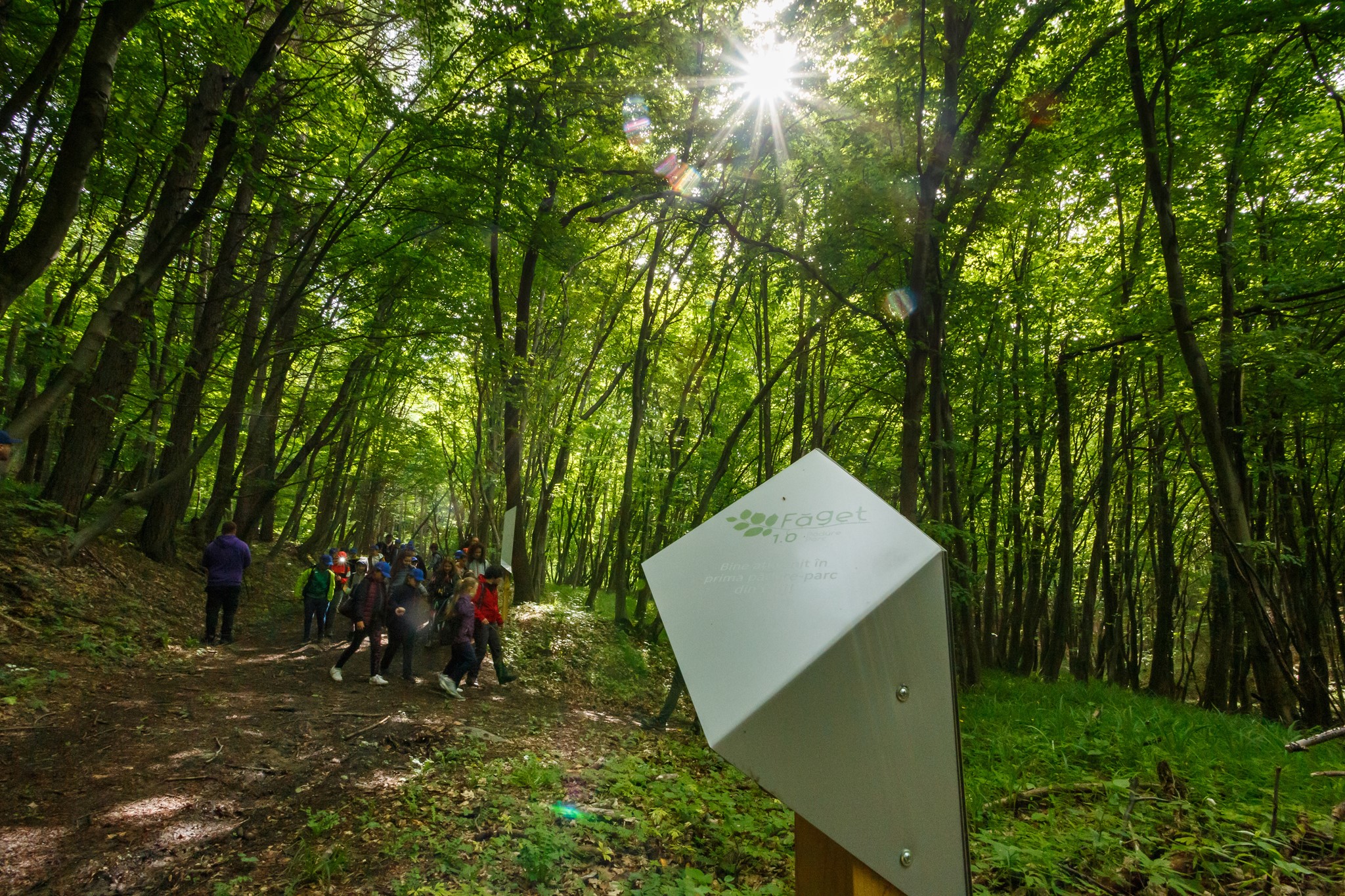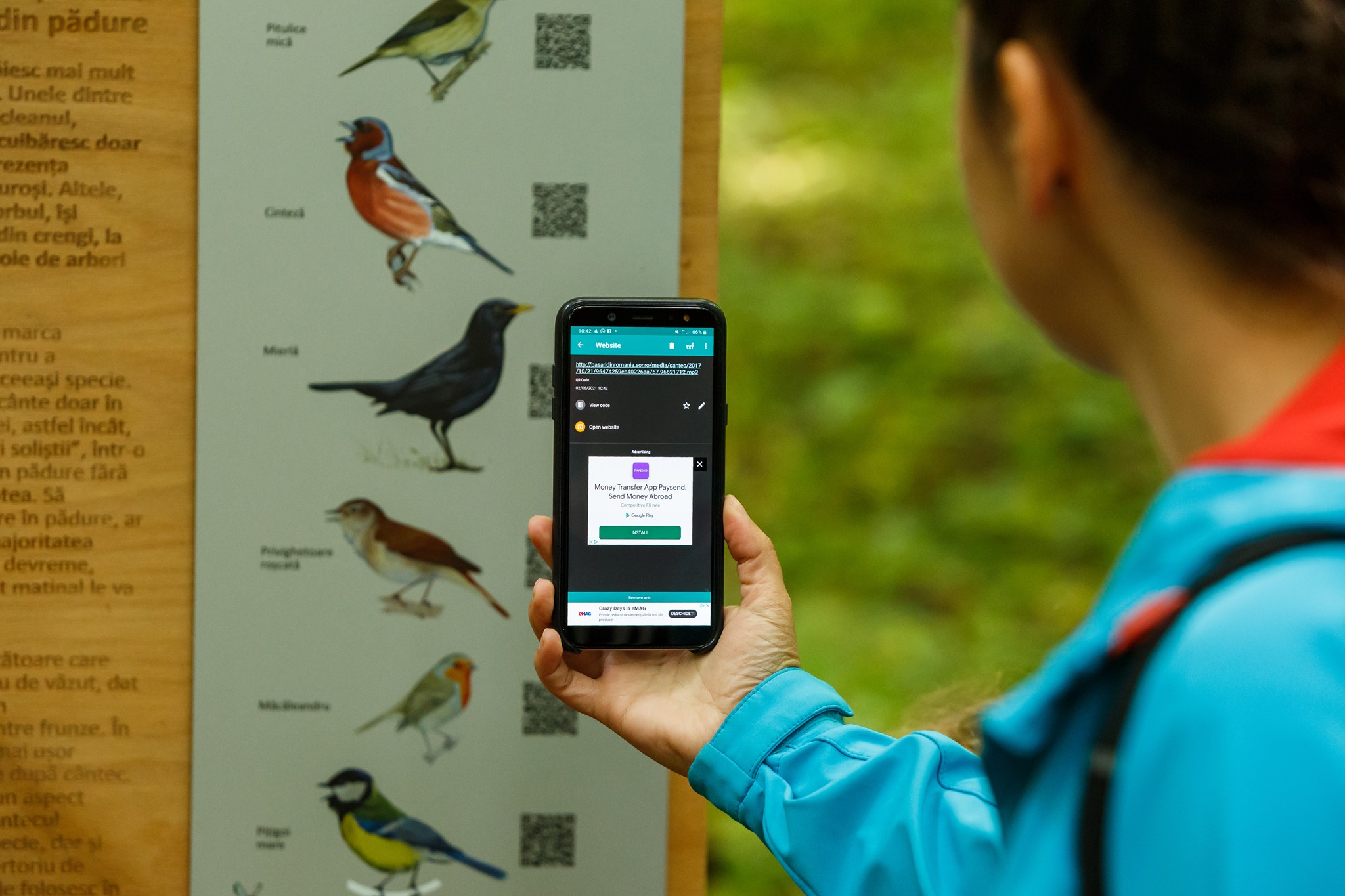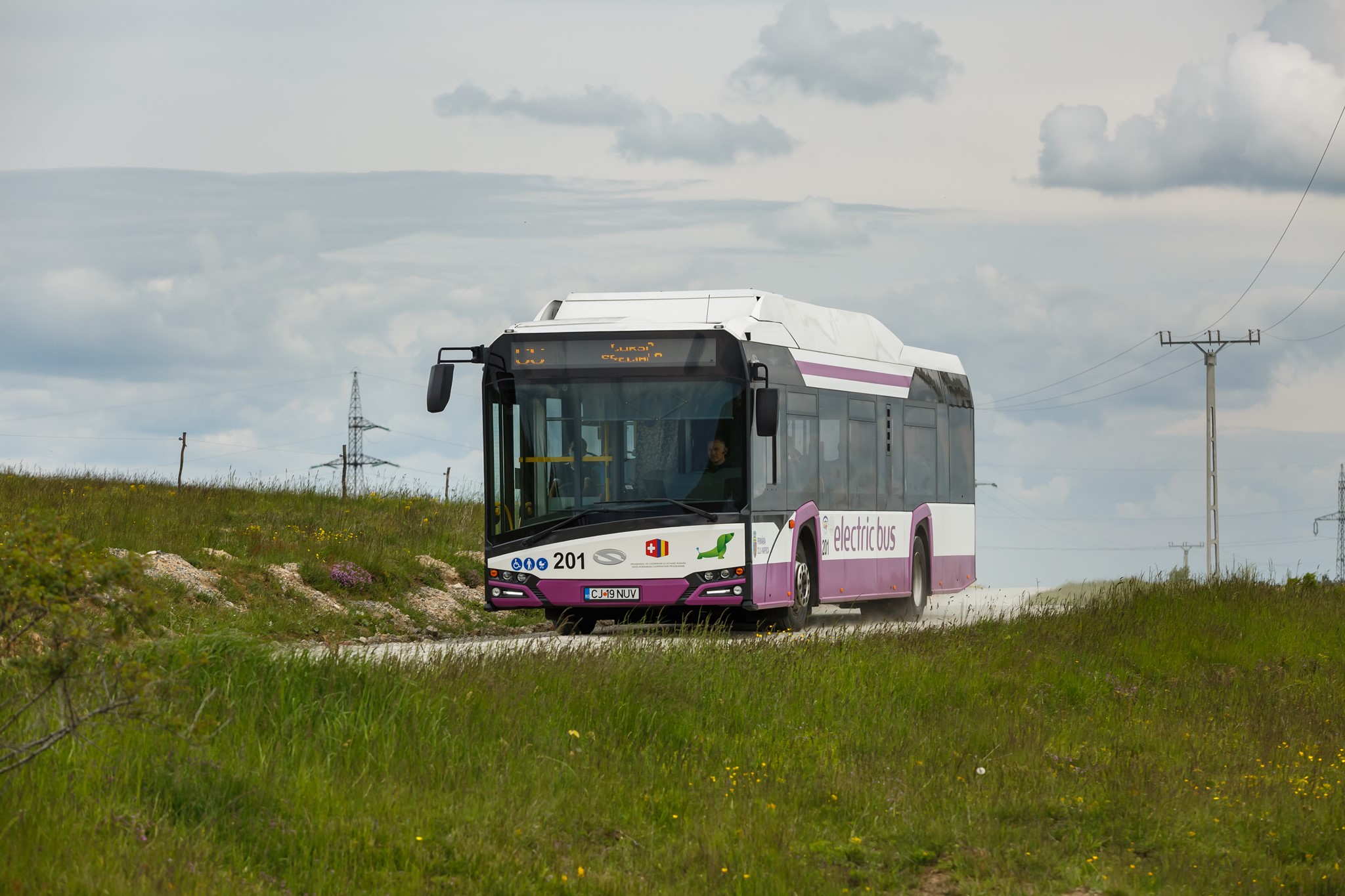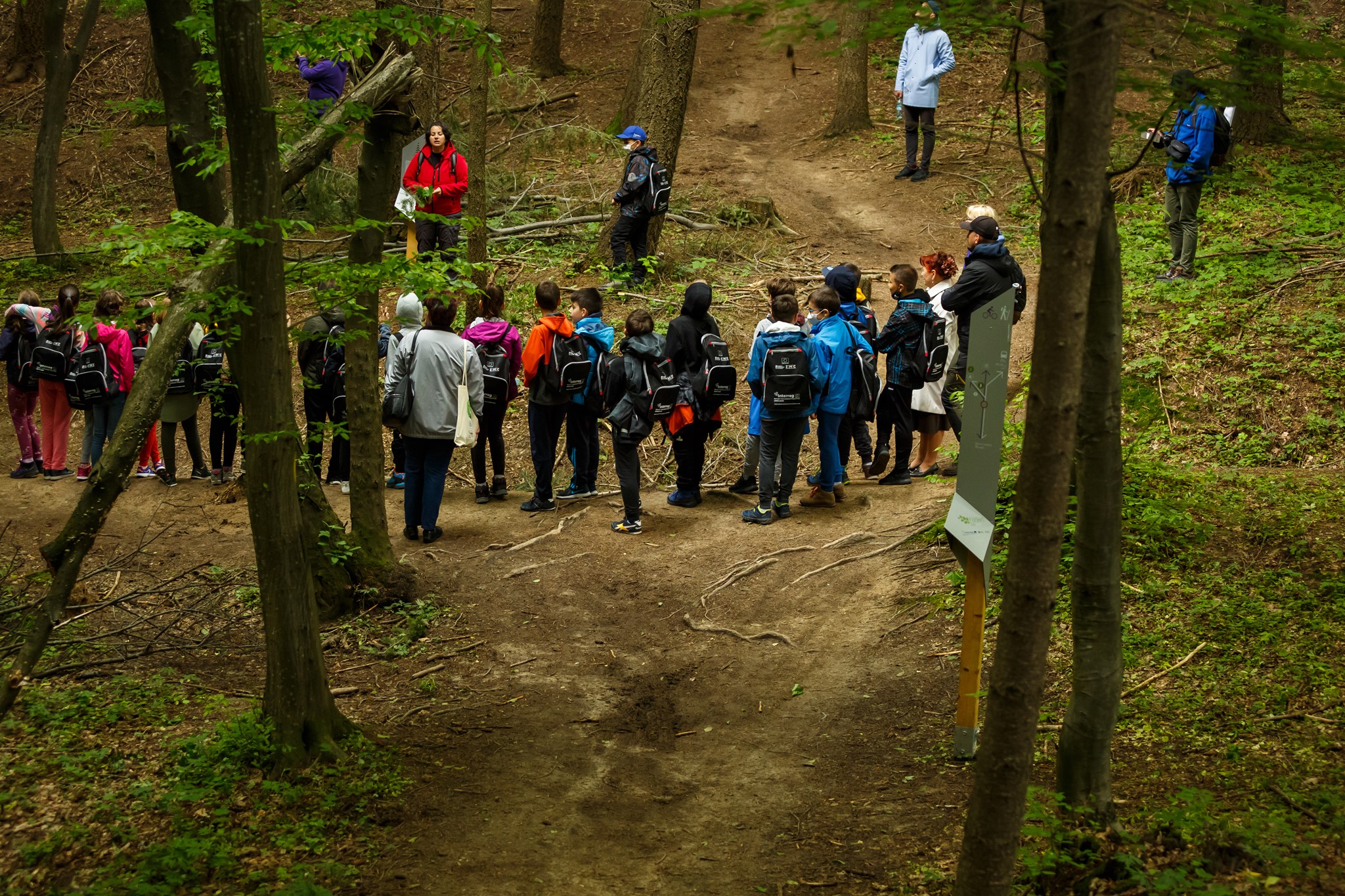Reconnecting with nature
Făget Forest Park; Cluj's Green Lung
URBFORDAN Transnational Programme
The project was aimed to co-design and pilot an integrated multi-use management and operational plan for Făget Forest-Park (the largest planted area in the vicinity of Cluj-Napoca, a Natura 2000 site and a popular recreational destination for residents), meant at solving potential conflicts between different uses (nature protection and conservation of biodiversity; mitigation of climate change and regional climate regulation; recreational and tourism activities), in a NEB approach.
EU Member State, Western Balkans or Ukraine
Romania
Local
Location 1: Municipality of Cluj-Napoca, Cluj County, Romania
Location 2: Commune of Feleacu
Location 3: Commune of Ciurila
Location 2: Commune of Feleacu
Location 3: Commune of Ciurila
Yes
Romania- Nord-Vest
No
It addresses urban-rural linkages
It refers to other types of transformations (soft investment)
Yes
2021-09-30
Yes
ERDF : European Regional Development Fund
No
No
As a representative of an organisation
The project is a pilot component of a broader local and metropolitan policy included in the 2021-2027 Integrated Urban Development Strategy to expand the planted areas by at least 200 hectare by 2030 and to make the existing one more attractive and inclusive. This policy is also a central piece in the Action Plan for Climate Neutrality, after Cluj-Napoca was selected by EU Mission to become one of the 100 citied to reach climate neutrality by 2030.
The vision of the city is to create a network of forest parks that will be integrated in a metropolitan green belt with multi-use ecosystem, economic, social inclusion, recreational and tourism functions, in line with the NEB core values: aesthetics, sustainability and inclusion. Făget was selected to be the first such forest that goes through a NEB transformation process because it is the largest forest owned by the Municipality, a valuable Natura 2000 protected site and the most popular weekend destination for the people that want to reconnect with nature.
The project was co-financed by the Interreg Danube Transnational Programme and resulted in the following deliverables: a City & Metropolitan Ecosystem Mapping; an Integrated Multi-use Management Plan for Făget peri urban forest developed in the framework of co-design activities; pilot physical interventions included in the Plan to encourage sustainable practices in the area; educational and scientific activities organized to point out the benefits of the investment.
The vision of the city is to create a network of forest parks that will be integrated in a metropolitan green belt with multi-use ecosystem, economic, social inclusion, recreational and tourism functions, in line with the NEB core values: aesthetics, sustainability and inclusion. Făget was selected to be the first such forest that goes through a NEB transformation process because it is the largest forest owned by the Municipality, a valuable Natura 2000 protected site and the most popular weekend destination for the people that want to reconnect with nature.
The project was co-financed by the Interreg Danube Transnational Programme and resulted in the following deliverables: a City & Metropolitan Ecosystem Mapping; an Integrated Multi-use Management Plan for Făget peri urban forest developed in the framework of co-design activities; pilot physical interventions included in the Plan to encourage sustainable practices in the area; educational and scientific activities organized to point out the benefits of the investment.
Co-design
Ecosystem
Experiences
Inclusive
Education
Four strands of activities have been implemented to support the sustainability of the interventions envisaged by the project.
The first strand was aimed at improving the planning and management of the whole forest (40 hectare) and resulted in an integrated multi-use management plan, with both strategic and operational components, that has been co-designed and agreed with the relevant stakeholders (City Hall, Metropolitan IDA, local university, NGOs, activists and the national entity in charge of forest exploitation). Technical studies in support of this Plan have been elaborated by the Babeș-Bolyai University (e.g. the evaluation of ecosystem services in Făget).
The second strand is related to the promotion of nature friendly non-motorized mobility. Colour coded bike trails have been marked and designated for different categories of bike users. Also, walking paths have been marked and equipped with panels describing the natural ecosystem, species and habitats.
The third strand was aimed to develop a scientific infrastructure and to organize/host specific events organized by the universities that are specialized in climate mitigation, nature protection and biodiversity conservation, geology or forestry.
The fourth strand was focused on the use of only natural, locally procured building materials (wood and stone) for the minimally invasive physical interventions delivered for recreational, educational and scientific purposes (amphitheatre, rest areas, rain shelter, sports facilities for pull ups or crunches, yoga platform, educational point, geological point and elements, info panels, amphibian ponds). These interventions cover only 0.015% of the forest area and involved only simple wood works conducted by local carpenters.
The fifth strand involved waste removal campaigns organized by NGOs with the support of volunteers.
The first strand was aimed at improving the planning and management of the whole forest (40 hectare) and resulted in an integrated multi-use management plan, with both strategic and operational components, that has been co-designed and agreed with the relevant stakeholders (City Hall, Metropolitan IDA, local university, NGOs, activists and the national entity in charge of forest exploitation). Technical studies in support of this Plan have been elaborated by the Babeș-Bolyai University (e.g. the evaluation of ecosystem services in Făget).
The second strand is related to the promotion of nature friendly non-motorized mobility. Colour coded bike trails have been marked and designated for different categories of bike users. Also, walking paths have been marked and equipped with panels describing the natural ecosystem, species and habitats.
The third strand was aimed to develop a scientific infrastructure and to organize/host specific events organized by the universities that are specialized in climate mitigation, nature protection and biodiversity conservation, geology or forestry.
The fourth strand was focused on the use of only natural, locally procured building materials (wood and stone) for the minimally invasive physical interventions delivered for recreational, educational and scientific purposes (amphitheatre, rest areas, rain shelter, sports facilities for pull ups or crunches, yoga platform, educational point, geological point and elements, info panels, amphibian ponds). These interventions cover only 0.015% of the forest area and involved only simple wood works conducted by local carpenters.
The fifth strand involved waste removal campaigns organized by NGOs with the support of volunteers.
The quality of experience for people reconnecting with nature in Făget Forest Park has been a focal point of the project right from the beginning. Once the Integrated Management Plan, including the list of necessary physical interventions was delivered, a design competition was launched to select the best design ideas. A jury, that included architects and members of the project team, selected the ideas and the graphic concepts for every object (e.g. info panel, bench, platform etc.) based on both aesthetic (a distinctive style to make the investment attractive to user and easy to integrate in the natural landscape, beyond the simple functionality) and sustainable criteria. All participants were requested to consider only the use of organic materials (especially wood) for small, minimally invasive interventions (maximum 15 sqm), with no foundation and to possibility to remove it without leaving behind any visible trace.
The forest zoning for various uses and subsequent physical interventions was the result of large co-design process with scientific support from the Babeș-Bolyai University of Cluj-Napoca and with involvement of various public and private stakeholders. The overall objective of the process has been to design a sustainable, multifunctional forest-park for multiple categories of users (children, pupils and students, scientists or residents in search of reconnecting with nature) and experiences (walking, biking, resting, fitness, yoga relaxation, reading, educational activities, scientific observations) that are permitted in a eco sensitive setup protected by Law.
The forest zoning for various uses and subsequent physical interventions was the result of large co-design process with scientific support from the Babeș-Bolyai University of Cluj-Napoca and with involvement of various public and private stakeholders. The overall objective of the process has been to design a sustainable, multifunctional forest-park for multiple categories of users (children, pupils and students, scientists or residents in search of reconnecting with nature) and experiences (walking, biking, resting, fitness, yoga relaxation, reading, educational activities, scientific observations) that are permitted in a eco sensitive setup protected by Law.
The project idea is the result of the 2019 edition of the participatory budgeting process. The proposal came from a resident and was voted by the residents in Cluj to become one on the projects to be implemented in 2020, under the coordination of the Municipality. One of the priorities of the project was to provide accessible and affordable nature-related experiences for the residents of both the city and its metropolitan area. Făget forest is a traditional destination for recreative activities (walking, cycling, picnicking), especially in the weekend and during holidays. Most of the users are low to medium income ones, living in the peripheral city neighbourhoods and in the communes around Cluj-Napoca, that cannot afford a vacation or the access fee to a private recreational resort. The vision of the project was to designate an area for recreational, cultural and educational uses, to open it to the public free of charge and to encourage activities for all with minimal impact on the other ecosystem functions of the forest. Also, the co-design and co-delivery of every solution implemented represented a shift from the traditional full control to a participatory type of management.Cluj-Napoca Municipality and the Metropolitan IDA, with the support of other public institution and NGOs have organized educational and recreation activities for 350 pupils that allowed them to find more about the trees, birds and animals living in the forest and the geology of the area. The initiative has a intergeneration approach, involving university students and professors, some of them retired, an volunteers as guides. Another NGO is organizing every December a large orientation competition for over 100 pupils coming from different counties. The inspirational character of the project comes from its success in addressing the ”social fit” challenge of enhancing the multifunctionality of a forest ecosystems by more effectively connecting multiple societal demands.
The history of the project started in 2019, when a citizen submitted a project proposal of transforming Făget into a multifunctional forest park, in the framework of the participative budgeting campaign organized annually by the Municipality of Cluj. The proposals entered the voting phase and was selected by the resident to be one of the initiatives to be implemented in the next year, under the coordination of the City Hall and Metropolitan IDA.
After a funding opportunity for the implementation phase was secured and a specialized design & architecture consultant was selected, the project partners organized several workshops with relevant stakeholders. A large public consultation was organized by the Municipality under the umbrella of the Cluj Center for Civic Imagination and Innovation. Over 50 residents, activists and representatives of NGOs, attended this event that aimed at collecting innovative ideas for the future planning work conducted by the consultant. Their inputs focused on the importance of keeping a balance between nature conservation and human interventions that should be minimally invasive, on the need to diversify the experiences of various groups that feel the need to reconnect with nature and on keeping the area accessible and affordable for all residents, including elderly or low income residents. The design competition, open to both specialists and amateurs, was an innovative civic imagination tool applied at metropolitan level.
The citizens have also been involved in the co-delivery phase, especially through volunteering campaigns for removing the illegal waste from the forest or for acting as tours for the visitors.
After a funding opportunity for the implementation phase was secured and a specialized design & architecture consultant was selected, the project partners organized several workshops with relevant stakeholders. A large public consultation was organized by the Municipality under the umbrella of the Cluj Center for Civic Imagination and Innovation. Over 50 residents, activists and representatives of NGOs, attended this event that aimed at collecting innovative ideas for the future planning work conducted by the consultant. Their inputs focused on the importance of keeping a balance between nature conservation and human interventions that should be minimally invasive, on the need to diversify the experiences of various groups that feel the need to reconnect with nature and on keeping the area accessible and affordable for all residents, including elderly or low income residents. The design competition, open to both specialists and amateurs, was an innovative civic imagination tool applied at metropolitan level.
The citizens have also been involved in the co-delivery phase, especially through volunteering campaigns for removing the illegal waste from the forest or for acting as tours for the visitors.
As indicated above, the co-design, co-delivery and co-management approach of the project was vital and represented the main key success factors.
The co-design phase included several workshops and a public consultation event with over 100 participants and subsequent direct meetings with a variety of relevant stakeholders, at local (eg. universities, NGOs, activists), metropolitan (IDA and communes from the metropolitan area), county (County School Inspectorate, County Environmental Protection Agency, Salvamont), regional (Romanian Order of Architects – Transylvania Branch) and national (Romsilva) level. Their inputs have been fundamental for the elaboration of the Integrated Multi-use Management Plan and for the design of the minimally invasive interventions.
Some of the relevant stakeholders, such as the local ”Babeș-Bolyai” University, have also been directly involved in the elaboration of the Integrated Multi-use Management Plan for the area and organized ”ReCoN-nect Community Talk, an event dedicated to researchers and specialist interested in the future of forest parks, that also included a study visit in Făget.
The co-delivery phase involved the direct participation of the stakeholders (eg. ”Babeș-Bolyai University, County School Inspectorate, Environmental Protection Agency, NGO such as ”Ecouri Verzi” and ”Societatea Ornitologică Română”) in implementing the micro-pyhsical interventions and the activities need to popularize them, especially through educational activities for pupils, scientific activities for students, MTB tours, volunteering campaigns etc.)
The co-management and co-monitoring dimensions were focused on the shift to a participatory governance model, that includes the Municipality (as owner of the area), ROMSILVA – the state entity in charge of forest management and exploitation, the Forest Guard, the university, NGOs and different activists – each included in the Management Plan delivered by the project with specific tasks.
The co-design phase included several workshops and a public consultation event with over 100 participants and subsequent direct meetings with a variety of relevant stakeholders, at local (eg. universities, NGOs, activists), metropolitan (IDA and communes from the metropolitan area), county (County School Inspectorate, County Environmental Protection Agency, Salvamont), regional (Romanian Order of Architects – Transylvania Branch) and national (Romsilva) level. Their inputs have been fundamental for the elaboration of the Integrated Multi-use Management Plan and for the design of the minimally invasive interventions.
Some of the relevant stakeholders, such as the local ”Babeș-Bolyai” University, have also been directly involved in the elaboration of the Integrated Multi-use Management Plan for the area and organized ”ReCoN-nect Community Talk, an event dedicated to researchers and specialist interested in the future of forest parks, that also included a study visit in Făget.
The co-delivery phase involved the direct participation of the stakeholders (eg. ”Babeș-Bolyai University, County School Inspectorate, Environmental Protection Agency, NGO such as ”Ecouri Verzi” and ”Societatea Ornitologică Română”) in implementing the micro-pyhsical interventions and the activities need to popularize them, especially through educational activities for pupils, scientific activities for students, MTB tours, volunteering campaigns etc.)
The co-management and co-monitoring dimensions were focused on the shift to a participatory governance model, that includes the Municipality (as owner of the area), ROMSILVA – the state entity in charge of forest management and exploitation, the Forest Guard, the university, NGOs and different activists – each included in the Management Plan delivered by the project with specific tasks.
The project had a strong research footprint, reflected especially in the content of the Integrated Multi-use Management Plan, in the strategic partnership with the ”Babeș-Bolyai” University, the Romanian Order of Architects and in the activities carried out with and for scientists and students. Also, one of the experts involved in the project published an article in the prestigious journal called ”Frontiers in Environmental Science”.
The core team of experts involved in the co-design and co-delivery phases included architects, designers, specialists in ecosystem services, ecology, urban forestry, biodiversity conservation, climate change mitigation, education and culture, sports, multi-level governance, stakeholder mapping, social inclusion and economy, Carpenters, guides, educators were also involved in the implementation phase. They attended the co-design workshop, the hybrid public consultation event, individual meetings with stakeholders and part of them were members in the jury for the design competition. Several work visits in the forest were organized.
The project was a component of transnational partnership that included partners and experts from Slovenia, Hungary, Austria, Serbia, Ukraine, Italy, Montenegro, Bosnia and Herzegovina and Czechia. This framework allowed the exchange of knowledge and good practices between these experts.
The local ”Babeș-Bolyai” University was the one in charge of researching the natural processes and ecosystem services of the Făget Forest. These studies substantiated the strategic and operational objectives of the Integrated Multi-use Management Plan, including the micro physical interventions. The elaboration of these studies involved monthly meetings of the multidisciplinary team of experts. Also, online and offline meetings of the transnational consortium allowed experts to present, debate and disseminate their findings.
The core team of experts involved in the co-design and co-delivery phases included architects, designers, specialists in ecosystem services, ecology, urban forestry, biodiversity conservation, climate change mitigation, education and culture, sports, multi-level governance, stakeholder mapping, social inclusion and economy, Carpenters, guides, educators were also involved in the implementation phase. They attended the co-design workshop, the hybrid public consultation event, individual meetings with stakeholders and part of them were members in the jury for the design competition. Several work visits in the forest were organized.
The project was a component of transnational partnership that included partners and experts from Slovenia, Hungary, Austria, Serbia, Ukraine, Italy, Montenegro, Bosnia and Herzegovina and Czechia. This framework allowed the exchange of knowledge and good practices between these experts.
The local ”Babeș-Bolyai” University was the one in charge of researching the natural processes and ecosystem services of the Făget Forest. These studies substantiated the strategic and operational objectives of the Integrated Multi-use Management Plan, including the micro physical interventions. The elaboration of these studies involved monthly meetings of the multidisciplinary team of experts. Also, online and offline meetings of the transnational consortium allowed experts to present, debate and disseminate their findings.
The main innovative dimensions of the project are:
1. Developing a methodology that builds on the experience of various actors from different countries and with different background in order to respond to the increasing demand of people living in urban areas to experience new ways of connecting with nature, especially in the context of Covid-19 pandemic. This complex methodology focused on the participatory approach in every phase, the elaboration of Management Plans and on small investments to showcase the multiple potential eco-friendly uses of the peri-urban forests.
2. The application of the methodology on a challenging and unique territory, more exactly a 40 hectares peri-urban forest park that is a natural reserve included in the Natura 2000 network
3. The elaboration of an Integrated Multi-use Management Plan, a strategic and operational tool to mediate between the various societal demands coming from different end users and the ecosystem services of forest parks, that was not available (to our knowledge) for any such area across the E.U.
4. The innovative mix of co-design practices in delivering the Plan and the small physical intervention, including participatory budgeting dedicated to sustainable green areas with a voting system open to all residents, followed by stakeholder mapping, several workshops and a large hybrid public consultation with over 100 stakeholders organized despite the Covid-19 pandemic, a design competition, an event dedicated to researchers interested in area/topic.
5. The direct and substantial involvement of relevant stakeholders in implementation phase. Babes-Bolyai University researchers were engaged in the whole process.
6. The strong metropolitan character of the project is also innovative, at least for the CEE area. The project was comanaged with Cluj Metropolitan IDA in order to underline that the sustainable development concept cannot rely on an interjurisdictional approach, that goes beyond administrative borders.
1. Developing a methodology that builds on the experience of various actors from different countries and with different background in order to respond to the increasing demand of people living in urban areas to experience new ways of connecting with nature, especially in the context of Covid-19 pandemic. This complex methodology focused on the participatory approach in every phase, the elaboration of Management Plans and on small investments to showcase the multiple potential eco-friendly uses of the peri-urban forests.
2. The application of the methodology on a challenging and unique territory, more exactly a 40 hectares peri-urban forest park that is a natural reserve included in the Natura 2000 network
3. The elaboration of an Integrated Multi-use Management Plan, a strategic and operational tool to mediate between the various societal demands coming from different end users and the ecosystem services of forest parks, that was not available (to our knowledge) for any such area across the E.U.
4. The innovative mix of co-design practices in delivering the Plan and the small physical intervention, including participatory budgeting dedicated to sustainable green areas with a voting system open to all residents, followed by stakeholder mapping, several workshops and a large hybrid public consultation with over 100 stakeholders organized despite the Covid-19 pandemic, a design competition, an event dedicated to researchers interested in area/topic.
5. The direct and substantial involvement of relevant stakeholders in implementation phase. Babes-Bolyai University researchers were engaged in the whole process.
6. The strong metropolitan character of the project is also innovative, at least for the CEE area. The project was comanaged with Cluj Metropolitan IDA in order to underline that the sustainable development concept cannot rely on an interjurisdictional approach, that goes beyond administrative borders.
The methodology of the project was elaborate by the transnational consortium and included three main WPs:
(i) a WP dedicated to the participatory approach, including: the mobilization of stakeholders (key stakeholder profiles and analysis, surveys, database, GIS mapping, mobilization workshop); active involvement of key actors in developing the Management Plan (prioritization and action planning workshops, public consultation);
(ii) a WP resulting in the elaboration of the Integrated Multi-use Management Plan for Făget forest park, including the following steps: an analysis of the Făget area (based on data collection and GIS database methodology); the ecosystem services mapping/valuation (based on a methodology and training); the per se development of the Plan (based on a methodology and training activities, with input from the workshops and public consultation from the first WP)
(iii) a WP of micro physical interventions, based on the priority measures included in the Plan, with the purposes to encourage the multiple uses of Făget forest park by different groups. This WP included: the final list of priority equipment to be installed in the forest; a design competition for the selection of best ideas to be implemented; the final design, purchase and installation on site; a Smartphone App for the interpretation of the site, that will be used by all transnational partners.
Other transversal activities included the dissemination of the project outcomes (e.g. by publishing scientific articles in a prestigious international journal).
(i) a WP dedicated to the participatory approach, including: the mobilization of stakeholders (key stakeholder profiles and analysis, surveys, database, GIS mapping, mobilization workshop); active involvement of key actors in developing the Management Plan (prioritization and action planning workshops, public consultation);
(ii) a WP resulting in the elaboration of the Integrated Multi-use Management Plan for Făget forest park, including the following steps: an analysis of the Făget area (based on data collection and GIS database methodology); the ecosystem services mapping/valuation (based on a methodology and training); the per se development of the Plan (based on a methodology and training activities, with input from the workshops and public consultation from the first WP)
(iii) a WP of micro physical interventions, based on the priority measures included in the Plan, with the purposes to encourage the multiple uses of Făget forest park by different groups. This WP included: the final list of priority equipment to be installed in the forest; a design competition for the selection of best ideas to be implemented; the final design, purchase and installation on site; a Smartphone App for the interpretation of the site, that will be used by all transnational partners.
Other transversal activities included the dissemination of the project outcomes (e.g. by publishing scientific articles in a prestigious international journal).
The methodology of the project, itself, can be considered a model that can be transferred to other green areas in Cluj or to other cities. The innovate co-design, co-implementation and co-management tools developed and combined in the framework of this project can allow communities to reconsider the role, the planning and management of peri-urban forests in the complex context of global and also local challenges. This refers to the participatory budgeting process, the design competition, stakeholder mapping or to public consultation event organized by a Center for Civic Imagination and Innovation established by the Municipality.
The Integrated Multi-use Management Plan, elaborated by an international multidisciplinary team of experts and debated with the metropolitan ecosystem, is another example of best practice that can be transferred to virtually any city in the world. The strong metropolitan approach of the project (that was co-managed by the Municipality and the Metropolitan IDA) is yet another source of inspiration for cities that understand the need to go beyond their current administrative border when tackling the reconnection with nature.
The minimally invasive physical interventions delivered by the project are also inspirational due to the co-design approach of the design (design competition open to all, the use of organic materials that can easily be reused for other purposes and that leaves no visible trace in the forest and the multiple uses of these sustainable, cheap and temporary interventions that cover only 0.015% of the forest but can host hundreds of different users at the same time.
The activities meant at showing the benefits of the micro intervention can also be replicated in other similar setting, especially those addressing the environmental education, awareness raising and inter-generational exchanges.
The Integrated Multi-use Management Plan, elaborated by an international multidisciplinary team of experts and debated with the metropolitan ecosystem, is another example of best practice that can be transferred to virtually any city in the world. The strong metropolitan approach of the project (that was co-managed by the Municipality and the Metropolitan IDA) is yet another source of inspiration for cities that understand the need to go beyond their current administrative border when tackling the reconnection with nature.
The minimally invasive physical interventions delivered by the project are also inspirational due to the co-design approach of the design (design competition open to all, the use of organic materials that can easily be reused for other purposes and that leaves no visible trace in the forest and the multiple uses of these sustainable, cheap and temporary interventions that cover only 0.015% of the forest but can host hundreds of different users at the same time.
The activities meant at showing the benefits of the micro intervention can also be replicated in other similar setting, especially those addressing the environmental education, awareness raising and inter-generational exchanges.
The following global challenges were tackled by the project:
1. Climate change – Făget Forest Park plays a central role in stopping land erosion and in climate regulation. Also, it is included in the City s Action Plan for Climate Neutrality by 2030 with a significant role in carbon sequestration.
2. Air pollution – Cluj-Napoca its a growing city facing traffic congestion. Făget area itself is located near DN 1, the national road with the highest traffic values in Romania; tree canopy capture particulate pollutants and absorb them through their leaves, branches and stems
3. Health problems - recent evidences shows that exposure to nature – especially woodlands – have several health benefits for people, including decrease of stress, decrease the incidence of depression and strengthening the immune system
4. Quality of water - forested areas act as a filter on rainwater, removing pollutants before the water reaches rivers and streams; Făget forest is crossed by various springs that also penetrate the urban area
5. Education and learning – the use of Făget Forest-park for educational and research activities for pupils, students and scientists will improve their knowledge and set a strong foundation for eco-friendly behaviours
6. Rich-poor gap – Făget is a traditional destination for affordable recreational activities, used especially by low- and medium-income inhabitants; the project makes the area more accessible and new experiences affordable for the disadvantaged
7. Demographic transition – Romania is facing a rapid depopulation and aging because of massive outmigration and low birth rate; Cluj has the ambition to remain a competitive alternative to international migration by providing a better quality of life for citizens, including easy access to public green areas.
1. Climate change – Făget Forest Park plays a central role in stopping land erosion and in climate regulation. Also, it is included in the City s Action Plan for Climate Neutrality by 2030 with a significant role in carbon sequestration.
2. Air pollution – Cluj-Napoca its a growing city facing traffic congestion. Făget area itself is located near DN 1, the national road with the highest traffic values in Romania; tree canopy capture particulate pollutants and absorb them through their leaves, branches and stems
3. Health problems - recent evidences shows that exposure to nature – especially woodlands – have several health benefits for people, including decrease of stress, decrease the incidence of depression and strengthening the immune system
4. Quality of water - forested areas act as a filter on rainwater, removing pollutants before the water reaches rivers and streams; Făget forest is crossed by various springs that also penetrate the urban area
5. Education and learning – the use of Făget Forest-park for educational and research activities for pupils, students and scientists will improve their knowledge and set a strong foundation for eco-friendly behaviours
6. Rich-poor gap – Făget is a traditional destination for affordable recreational activities, used especially by low- and medium-income inhabitants; the project makes the area more accessible and new experiences affordable for the disadvantaged
7. Demographic transition – Romania is facing a rapid depopulation and aging because of massive outmigration and low birth rate; Cluj has the ambition to remain a competitive alternative to international migration by providing a better quality of life for citizens, including easy access to public green areas.
(i) An Integrated Multi-Use Management Plan for the whole area of Făget Forest Park (40 hectares), based on a scientific analysis of its ecosystem services, that provides strategic and operational guidance for mediating and integrating multiple societal demands coming from various types of users that feel the need to reconnect with nature with severe protection regulations, under the umbrella of a pluralistic governance system;(ii) A set of inspirational co-design tools: a mix between participatory budgeting, stakeholder mapping, workshops, direct meetings, and design competition;(iii) A set of minimally invasive physical interventions, based only on locally procured organic materials, that can be easily moved or rearranged, necessary for multiple uses of the sub-area of the forest park designated for educational, recreational and sport activities that allow the reconnection with nature;(iv) Pilot activations (educational, research and recreational activities, sports and orientation competitions, guided visits of the area, volunteering campaigns for waste collection and recycle for over 500 pupils, elderly, adults - with the support of NGOs, universities, and public institutions
The main outcomes of the project are related to:
(i) A significant increase in the accessibility and openness of the forest park to a large variety of eco-friendly users and experiences (bikers, walkers, readers, photographers, students, scientists, sportsmen, yoga practitioners, elderly etc.), in the unique setting of a natural reservation that is 5 minutes away from the city limits;(ii) a visible behavioural and perception change at community level related to peri-urban forests, that used to be seen by most residents as unsafe peripheries, where they can throw waste or hunt without any permit.
In terms of impact, the project has set the foundation for a future ”metropolitan green belt” of forest parks that will replicate the successful story of Făget.
The main outcomes of the project are related to:
(i) A significant increase in the accessibility and openness of the forest park to a large variety of eco-friendly users and experiences (bikers, walkers, readers, photographers, students, scientists, sportsmen, yoga practitioners, elderly etc.), in the unique setting of a natural reservation that is 5 minutes away from the city limits;(ii) a visible behavioural and perception change at community level related to peri-urban forests, that used to be seen by most residents as unsafe peripheries, where they can throw waste or hunt without any permit.
In terms of impact, the project has set the foundation for a future ”metropolitan green belt” of forest parks that will replicate the successful story of Făget.
Both
{Empty}
Yes
Yes
Yes
Yes
Yes
Yes
Yes

